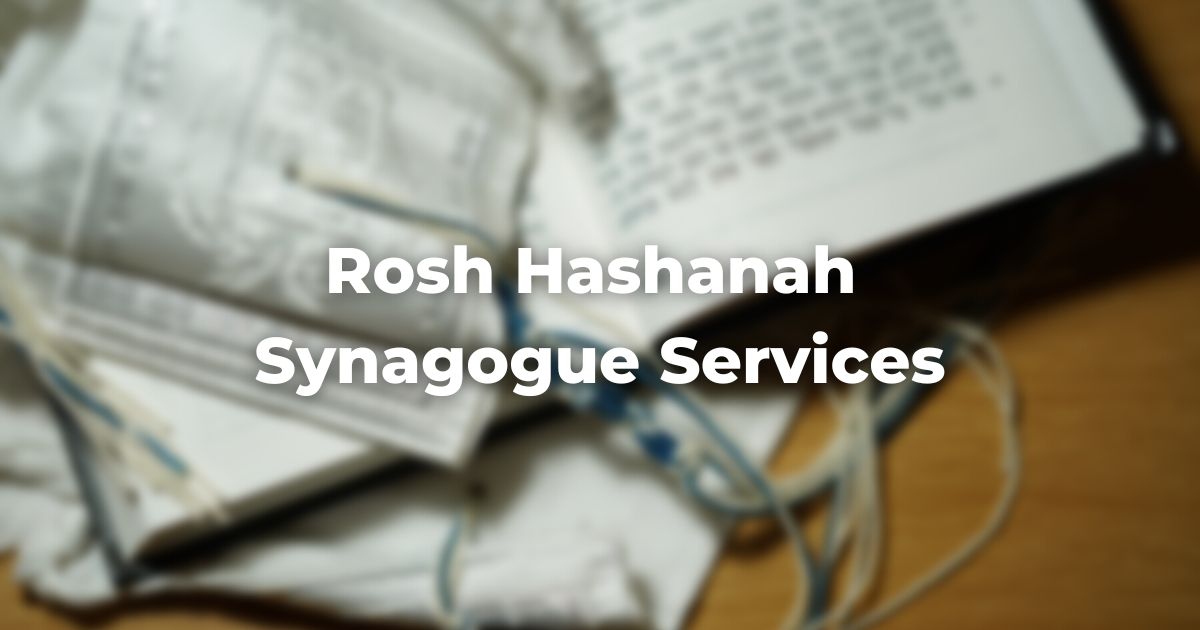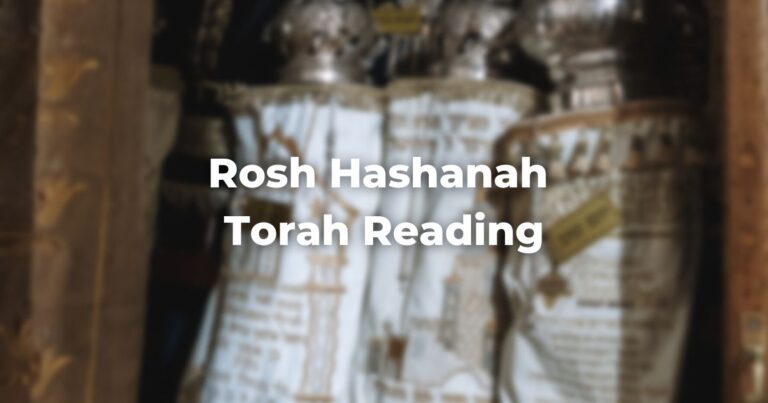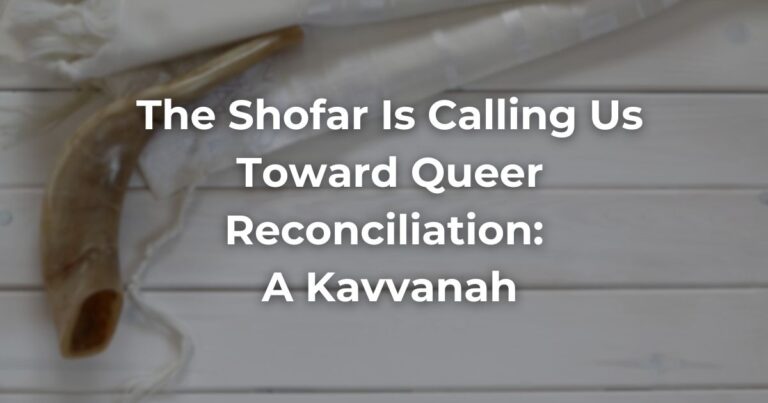In the minds of most people, Rosh Hashanah means spending a lot of time in synagogue.
This is not an unreasonable assessment: the prayers for the New Year that have developed over the generations are long and complex—beautiful, to be sure, but also elaborate.
Even the prayerbook in use on Rosh Hashanah and Yom Kippur is popularly referenced as the maḥzor (also written as machzor), even though the word maḥzor itself, a generic word for prayerbook, has no specific connection to the High Holidays and could theoretically be used to denote the traditional prayerbook in use on any festival.
Still, even worshipers who do not understand all the Hebrew prayers can have a profound experience worshiping with the larger community on Rosh Hashanah if they let themselves be moved by the experience of reciting their prayers in the midst of so many fellow worshipers gathered in their own synagogue and in synagogues like theirs around the world.
There is also an almost uncanny temporal aspect to that sense of solidarity as well: it is possible to feel connected not only to the Jews of other places, but also to the Jews of other times, to those who recited these same prayers in ghettos, in the shtetlach (small communities) of Eastern Europe, in the Jewish quarters of the medieval and modern worlds, east and west, even in the death camps of the Holocaust—and thus to feel connected not only to the Jews of our own day, but to all Jews of all times.
Evening and Morning Services
The main parts of the Evening Service and the first parts of the Morning Service are similar to other holy days and Shabbat. But even those parts of the worship service that are not changed in word are almost wholly transformed by the use of a set of hauntingly beautiful musical motifs and flourishes—popularly called by the general term nusaḥ (also written as nusach)—that are unique for the High Holidays.
Also unique to Rosh Hashanah is the frequent repetition of Psalm 81:4–5, the first phrase of which is taken as a reference to the shofar.
Kaddish
In the Kaddish prayer (and in all forms of Kaddish that are recited between Rosh Hashanah and Yom Kippur) the word le’eilla (“exalted”) (also written as le’eilah) is doubled as a subtle means of expressing our sense of God’s unutterable majesty and sovereignty during the holiday period.
As a nod to the ancients who attributed importance to maintaining precisely the same number of words in different versions of the same prayer, the words min kol [“from all”] are replaced with a one-word contraction, mi-kol.
The Amidah
The Amidah prayer for Rosh Hashanah is unique.
Although the structure is not entirely dissimilar from the versions of the Amidah recited on Shabbat and on other festivals, the differences between the prayer as recited on Rosh Hashanah and other festival prayers are quite marked nonetheless.
For example, almost every blessing is provided with an interpolated passage that changes its feel and even its basic meaning.
In the first and second blessings of the Amidah, for example, we add single sentences. (These may be found in any edition of the High Holiday prayerbook, including the recently published Maḥzor Lev Shalem.)
In the third blessing, however, a whole series of prayers beginning with the word u-v’khein (“and thus”) is added in and the blessing itself is altered to refer to God as ha-melekh ha-kadosh, our holy Sovereign, instead of the regular ending, ha-eil ha-kadosh, referencing the Almighty as our holy God.
There are also interpolations into the closing blessings: a prayer that all Israel be inscribed in the Book of Life in the penultimate blessing and, in the final benediction, a prayer of graceful brevity and power: “May we and the entire House of Israel be remembered and recorded in the Book of Life, blessing, sustenance, and peace.”
To those on less than intimate terms with the daily and Shabbat liturgy, these changes will seem minor, even unimportant. But for the Jew who is accustomed to the daily or weekly repetition of these prayers, the changes highlight the unique nature of Rosh Hashanah and underscore its uplifting and inspiring message.
Psalm 27 is added to the service as well, just as it is throughout the High Holiday season.
The meaning of the day is brought to the fore, however, in the middle blessing of the Amidah for Rosh Hashanah, which is an elaborate, poetic confession of the sovereignty of God, and of Israel’s role in bringing that aspect of divine reality to the attention of the nations.
Indeed, the passage at the very center of the Amidah on Rosh Hashanah, “Our God and God of our ancestors, cause Your sovereignty to be acknowledged throughout the world,” could reasonably be taken as the foundational idea of which the rest of the prayer is a poetic elaboration.
If Rosh Hashanah falls on Shabbat, we insert the appropriate additions for Shabbat into the Amidah and into Kiddush.
One of the subtle distinctions between worship services that the uninitiated might easily miss has to do with the specific moment at which the individual leading the preliminary part of the service cedes to the cantor or the prayer leader who will guide the congregation through Shaḥarit, the formal Morning Service.
Generally speaking, the first words the cantor or prayer leader chants at any Shabbat or festival service are intended to point to the themes of the day. On Rosh Hashanah and Yom Kippur, therefore, the first word intoned aloud is ha-melekh (the Sovereign), which brings the theme of God’s ineffable majesty subtly, but unmistakably, to the fore.
Although the symbolism is a bit archaic—and although no modern worshipers will live in countries governed by absolute monarchs—the idea that God rules the world as an all-powerful sovereign is not an idea moderns should casually dismiss.
To affirm God as Sovereign of the universe is to affirm that the world is neither an accident nor the result of purely mechanical happenstance. Indeed, images that portray God as the Sovereign of the world, to the extent that they allow worshipers to imagine themselves as the subjects of God’s kingdom, can and should be no less inspiring today than they were when they were first developed.
Piyyutim
The High Holiday liturgy also features a series of beautiful but occasionally quite challenging poems called piyyutim (singular: piyyut, from the same Greek root that gives us the words “poem” and “poet”), written by rabbis and scholars in many different lands over thousands of years.
It is customary to open the Ark when reciting many of these piyyutim. Do these ancient poems, many couched in arcane language that even fluent Hebrew speakers have trouble understanding, add to the High Holiday worship experience or detract from it?
Conservative editions of the High Holiday prayer-book, including Maḥzor Lev Shalem, attempt judiciously to choose piyyutim that will enhance the quality and feel of the service without overwhelming it with burdensome, uninspiring obscurity.
Other than when Rosh Hashanah falls on Shabbat, the Avinu Malkeinu prayer is recited at the end of the Morning Service.
Find Rosh Hashanah TorahRefers to the first five books of the Hebrew Bible, the Tanakh, also called the Five Books of Moses, Pentateuch or the Hebrew equivalent, Humash. This is also called the Written Torah. The term may also refer to teachings that expound on Jewish tradition. Read more reading here.
Adapted with permission from The Observant Life.
Authors
-

The Observant Life: The Wisdom of Conservative Judaism for Contemporary Jews distills a century of thoughtful inquiry into the most profound of all Jewish questions: how to suffuse life with timeless values, how to remain loyal to the covenant that binds the Jewish people and the God of Israel, and how to embrace the law while retaining an abiding sense of fidelity to one’s own moral path in life. Written in a multiplicity of voices inspired by a common vision, the authors of The Observant Life explain what it means in the ultimate sense to live a Jewish life, and to live it honestly, morally, and purposefully. The work is a comprehensive guide to life in the 21st Century. Chapters on Jewish rituals including prayer, holiday, life cycle events and Jewish ethics such as citizenship, slander, taxes, wills, the courts, the work place and so much more.
View all posts -







